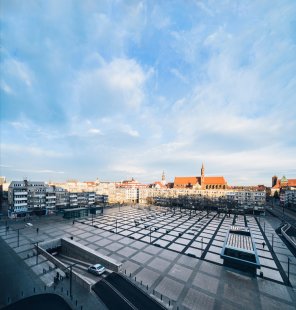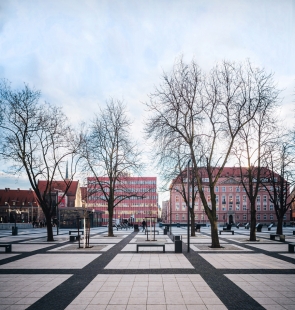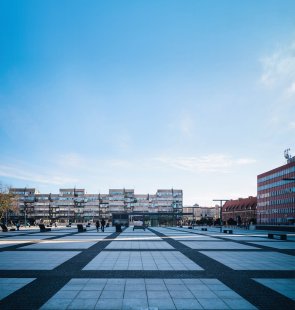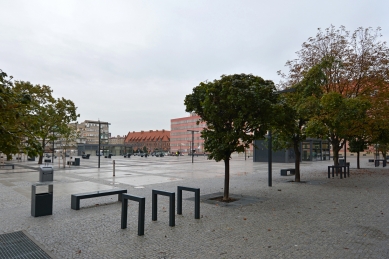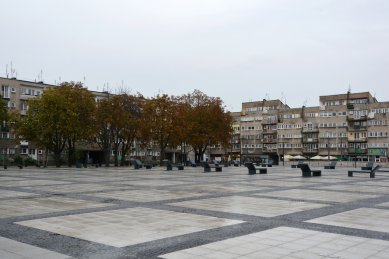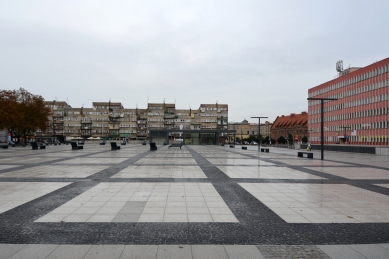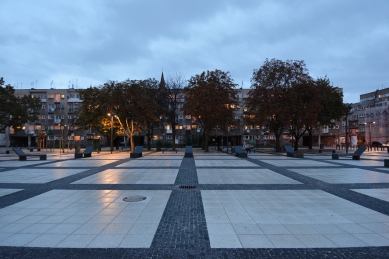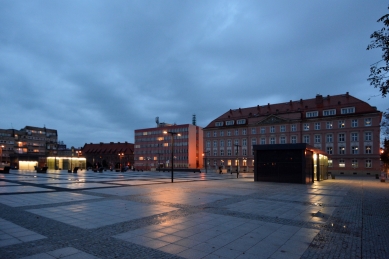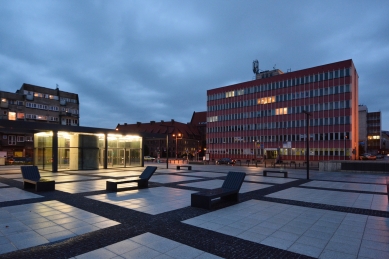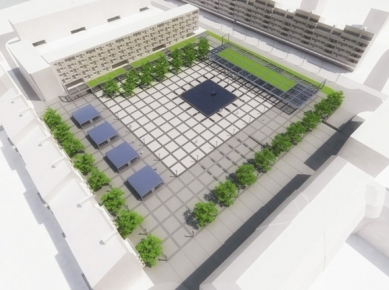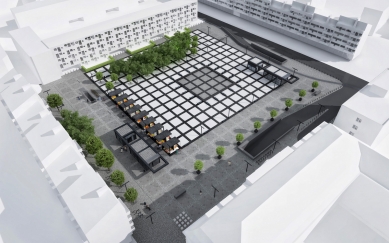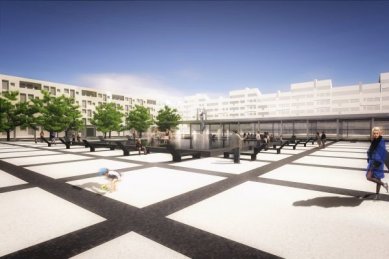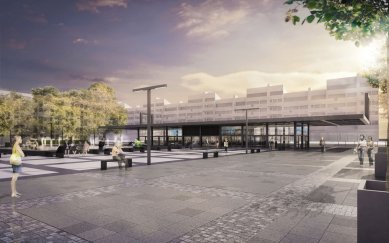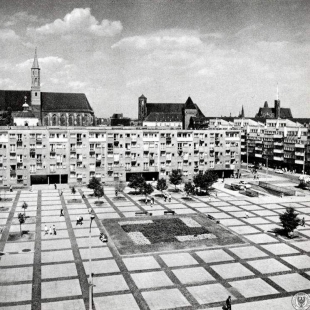
New Market Square
Plac Nowy Targ

Nowy Targ is one of the three historical squares of Wrocław established during the city's reconstruction after it was burned by the Mongols in the mid-13th century. The New Market (translated name) became a new commercial center of the medieval city. At the end of World War II, all surrounding buildings were destroyed except for two historical houses, one of which was the city hall. The surrounding modern buildings represent examples of highly regarded, high-quality architecture from the 1960s.
The reconstruction of the square resulted from the winning proposal of an architectural competition held in 2010. The reconstruction design was inspired by the original appearance of the square, which was comprehensively addressed along with the design and construction of modern residential buildings in the last century. The basis of the design, both original and contemporary, is a grid with a 5 x 5m pattern, which is represented in the surface of the square using the contrast of two colors of the paving stones. The grid defines the size and location of all elements in the square, including furniture. The original mature trees are preserved in the square, which, like the previous solution, connect to the grid. A fountain will be realized in the square, which is currently marked only by benches – sunbeds placed in the middle of the square. Beneath a large part of the square's surface, an underground parking garage has been built. One of the two exit structures from the underground parking will be extended by a city pavilion housing an information center and a café. The planned buildings also consistently derive from the dimensions of the grid with a modular size of 5 m. The entire central area of the square is inaccessible to cars, except for the part with the entrance to the underground parking.
Through the reconstruction of Nowy Targ, this public space is returning to a dignity befitting its historical significance and location within the center of the historic city. It is commendable that the authors managed to connect the realization to a relatively recent history, the architecture of the sixties, which is highly valued by the Polish professional community.
The reconstruction of the square resulted from the winning proposal of an architectural competition held in 2010. The reconstruction design was inspired by the original appearance of the square, which was comprehensively addressed along with the design and construction of modern residential buildings in the last century. The basis of the design, both original and contemporary, is a grid with a 5 x 5m pattern, which is represented in the surface of the square using the contrast of two colors of the paving stones. The grid defines the size and location of all elements in the square, including furniture. The original mature trees are preserved in the square, which, like the previous solution, connect to the grid. A fountain will be realized in the square, which is currently marked only by benches – sunbeds placed in the middle of the square. Beneath a large part of the square's surface, an underground parking garage has been built. One of the two exit structures from the underground parking will be extended by a city pavilion housing an information center and a café. The planned buildings also consistently derive from the dimensions of the grid with a modular size of 5 m. The entire central area of the square is inaccessible to cars, except for the part with the entrance to the underground parking.
Through the reconstruction of Nowy Targ, this public space is returning to a dignity befitting its historical significance and location within the center of the historic city. It is commendable that the authors managed to connect the realization to a relatively recent history, the architecture of the sixties, which is highly valued by the Polish professional community.
Vladimír Balda
The English translation is powered by AI tool. Switch to Czech to view the original text source.
0 comments
add comment


